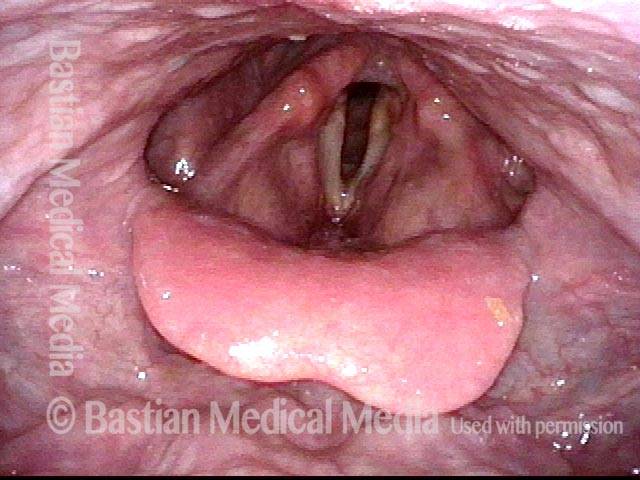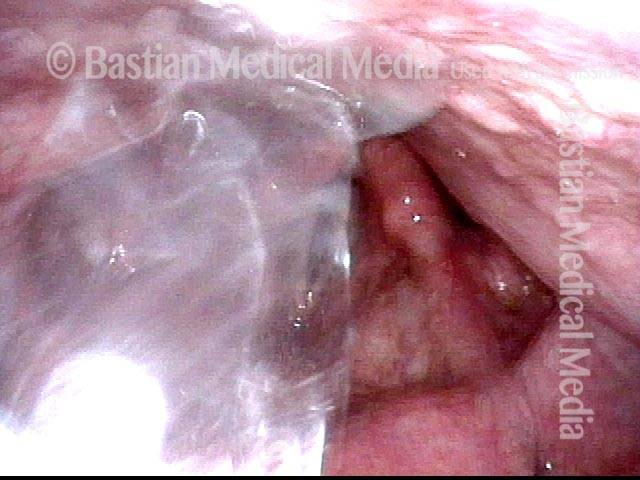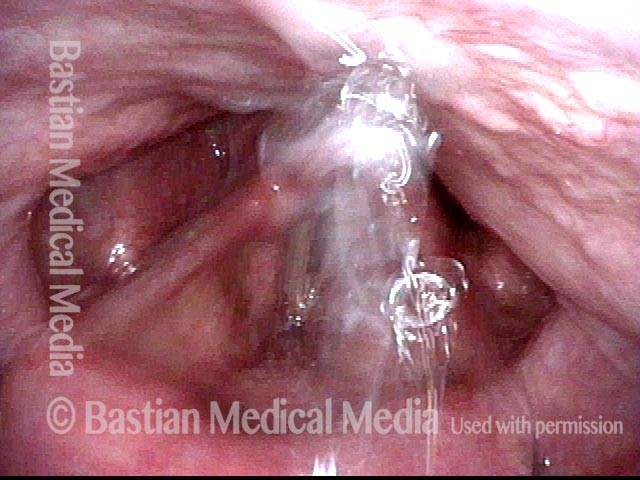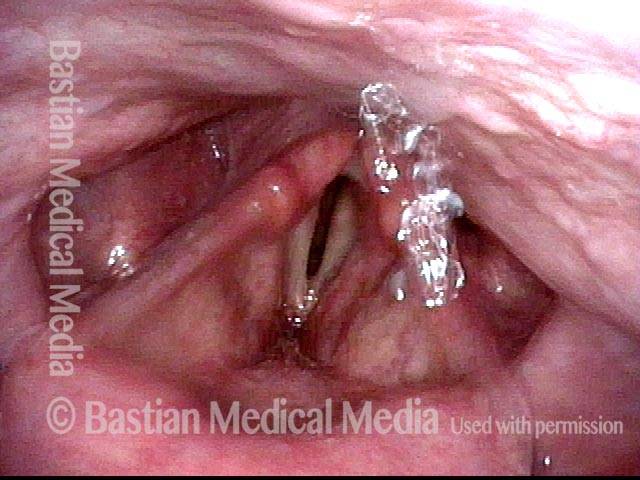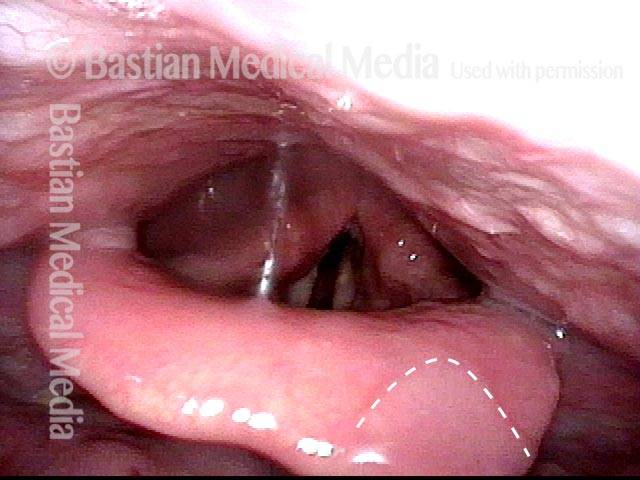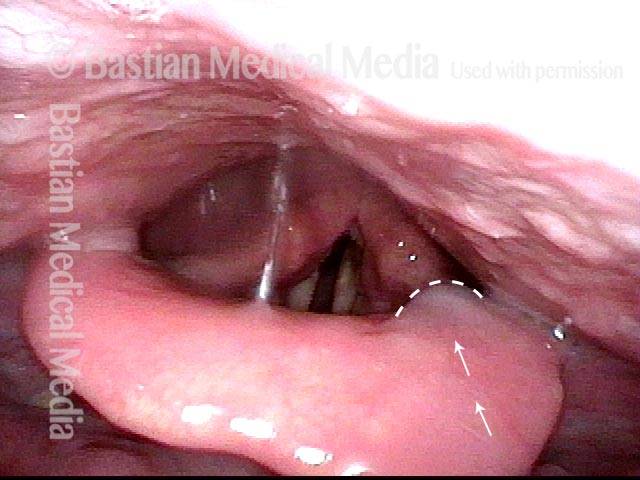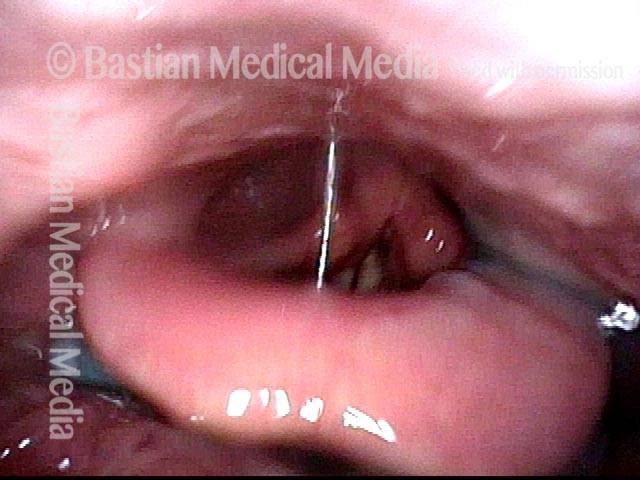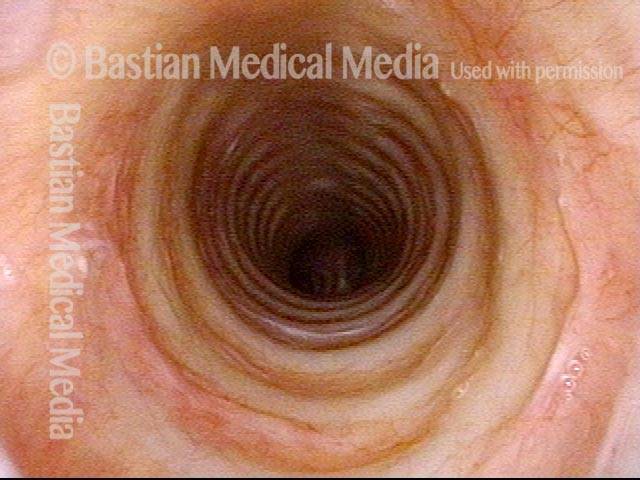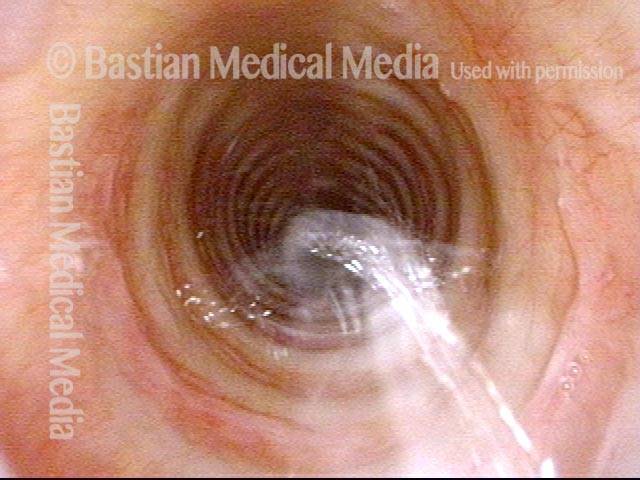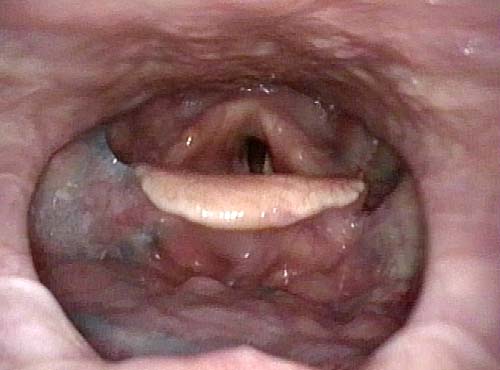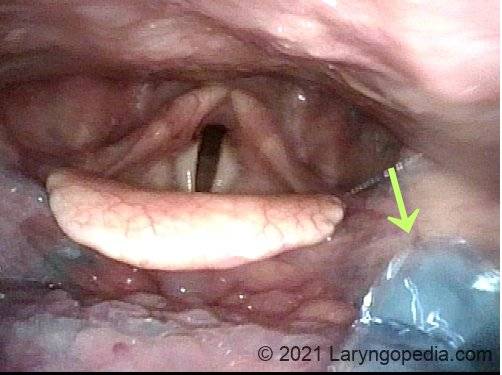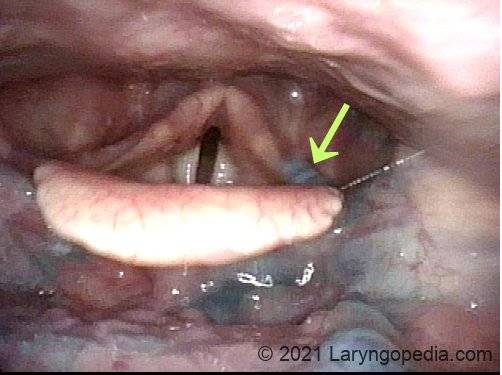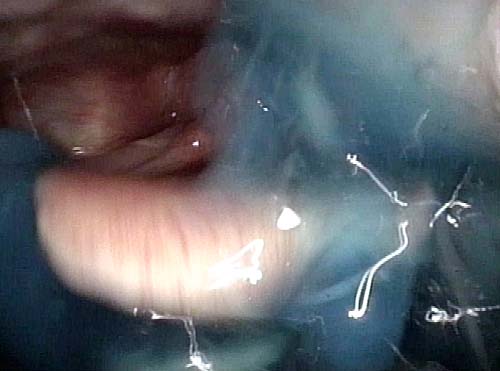Aspiration
The entry of foreign material, such as saliva, ingested liquid or food, or gastric contents refluxed up to the level of the throat, into the airway below the vocal cords.
If this foreign material only enters the laryngeal vestibule but does not descend below the vocal cords, this is not considered aspiration, but instead laryngeal penetration. Significant or recurring aspiration puts a person at risk of pneumonia; laryngeal penetration alone does not, though a person with laryngeal penetration is more likely to aspirate trace amounts than is the person with completely normal swallowing function.
Aspiration can occur before, during, or after the act of swallowing. Aspiration before the swallow means that liquid or food in the mouth dribbles or spills down into the larynx and beyond before the swallow is initiated. This is seen most commonly when there is a neurological disorder, such as after a cerebrovascular accident (stroke).
Aspiration during swallowing happens when, as the swallowed material travels from the base of the tongue toward the entrance to the esophagus (in the pharyngeal phase of swallowing), some of that material drops into the larynx and straight down through it to enter the airway. This kind of aspiration can happen because a person’s vocal cords don’t close properly, due to paralysis, paresis, or tissue loss such as after a partial laryngectomy.
Aspiration after swallowing happens when some of the ingested liquid or solid remains pooled in the lower throat after the swallow is complete, and when the patient takes the first post-swallow breath, it enters the airway. To try to prevent aspiration after swallowing, the supraglottic swallow technique can help.
